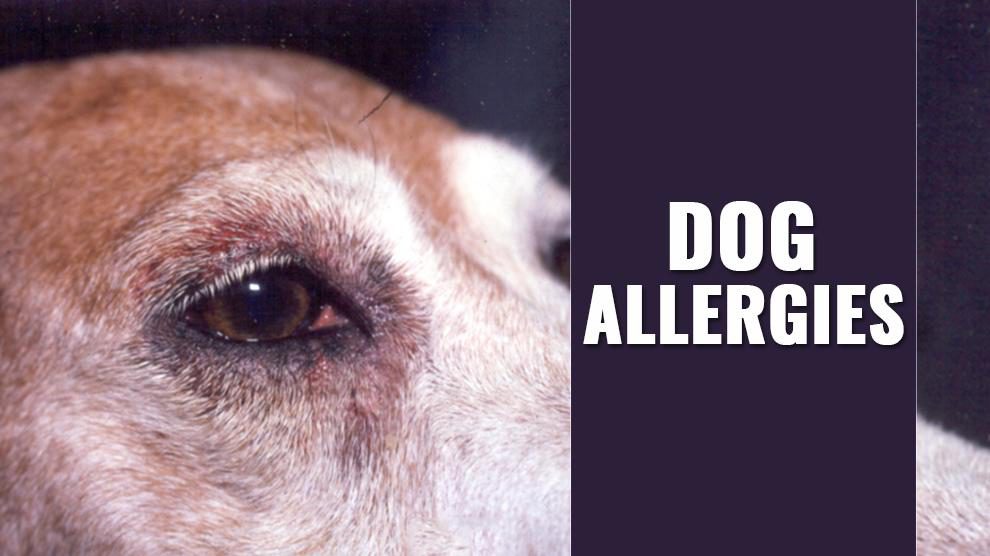Dog Pregnancy Calculator And Timeline
So, you have an allergic dog or you suspect that your dog has allergies?
In fact, Allergy is one of the main reasons dog owners visit Dr.google and it’s the third most likely reason for pet owners to visit the vet (Now you may understand, why many veterinary health insurance policies will not fully cover vet allergy visits).
Many dog owners will say that dog allergies are a headdesk and the most disturbing health problem a pet can have. But, Guess what, it’s an all too common condition and is been estimated that almost 20% of dogs suffer from allergies, with increasing tendency.
At any major veterinary seminars, you can count on packed attendance in any lecture entitled, “latest help for allergies,”.
But regrettably, most of these lectures are simply the same old stuff and a blow horn for pharmaceutical companies to find more and more ways to turn off or suppress parts of the nervous system and immune system.
Allergies hardly ever go away but that isn’t to say that there is nothing that can be done for your furry friends.
The good news is there are many options for animals with allergies. There are lots you can do before you to see a vet for more of those potent, expensive and undoubtedly not harm-free drugs.
How Can You Find If Your Dog Has Allergies?
A human’s allergic “organ”, let us say, is mainly the respiratory tract. So when we have allergies, we usually sneeze, cough, have an itchy, runny nose or itchy, red, watering eyes, etc.
On the contrary, a dog’s main allergic “organ” is its skin, so if its allergic reaction is acute they scratch or whelps, or gets hives. What’s more, Humans may also have allergic issues with their skin and Dogs can have their respiratory tract ablaze.
Much like humans, dog allergies have varying degrees of severity. Let us focus on the most common manifestations of allergies in dogs = Skin problems.
Symptoms
- Skin – Pruritus (itching), redness or hot spots, red stained or mutilated skin, waxy discharge with an unpleasant odor, hair loss, thickened or greasy skin.
- Ears – Recurring ear infections, Scratching the ears, redness, and waxy discharge.
- Paws – Licking, chewing the feet/pads, gnawing on the paw.
- Belly or Genitals – Excessive licking and scratching sides, hair loss and red stained skin in licked spots.
- Digestive System – Vomiting, stomach upset and diarrhea.
- Face – Scratching/Rubbing the face, red eyes with hair loss, discharge from nose or eyes and sneezing.
- Tail/Rear End – Licking, scratching tail head, butt scooting and excessive licking.
What’s The Cause Of My Dog’s Allergic Reaction?
In its simplest form, Allergic reactions in dogs are a horrible offshoot of an overactive immune system.
Symptoms, oh boy! All the doctors and vets love it, as using that, they will categorize and treat them with anti-inflammatory drugs (NSAID’s, steroids etc) which basically calm down the immune response.
in short-term, This isn’t a bad idea as it gives your dog the much-needed relief, however, for Long-term, artificially closing the immune system (except for a transplant scenario) is not at all recommended.
You’re switching off immune response just like shutting off that smoke alarm not considering why it was turning on if you do not attend to what is antagonizing the immune system; the allergy will by no means go away and it will go even downhill.
The main reasons for allergic reactions in dogs :
Tick And Flea Allergy
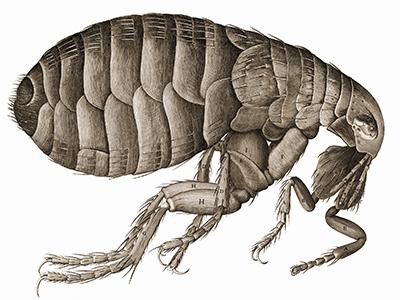
Flea allergy dermatitis (FAD) or hot spots is the most common dermatologic disease of domestic dogs. Signs and Symptoms of flea allergy are scratching, chewing, whining, licking, red or even raw skin from constant scratching and bumps on the skin.
The scratched or chewed area has a bare spot or thinning hair in the area called hot spots. Any pet can develop allergies to fleas and ticks and atopic pets have the biggest problem.
The breeds with a high prevalence may vary from country to country, so you’ll find a different list of American dogs with atopy than of British dogs with atopy.
Atopy or Inhalant Allergy
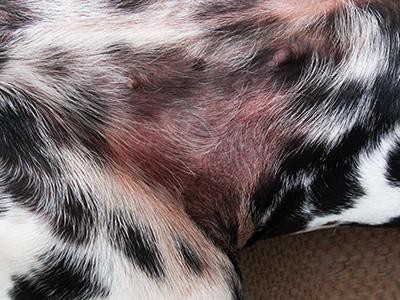
Also referred to as atopic dermatitis, this is the second most common type of allergy in dogs.
It affects approximately 15 percent of dogs, which usually shows up between the ages of 1 to 3 years and symptoms often get worse with age.
They are caused by Environmental allergens which are either inhaled or come into direct contact with the skin.
Common allergens are pollen (trees, grass, weeds) dust mites, molds, mildew, fertilizers, feathers, chemicals found in plastic materials, household inhalants (cigarette smoke, cleaners, perfume etc.), and cleaning or grooming products and fabrics.
Food Allergy

All the skin, gut, ear, and eye conditions can be a result of inflammation originating in their gut because dogs can be allergic to certain foods or maybe proteins in food.
Food sensitivity is not a food allergy but an allergy is just one type of food sensitivity. Wheat, beef or chicken and neurotoxic chemicals in food are the top 3 things causing food allergies in dogs.
Some nutritionists and vets believe food allergies may also be caused by feeding your dog the same food continuously.
It can be easier said than done to bring to light the exact cause of a dog’s allergy, but here are a few clues that might help. Usually, if your dog’s biting around her tail end on their back, check for fleas first.
If the digestive system is involved (diarrhea, upset stomach, or gas), look at food sources first. The inhalant allergy sufferers have itchy “ears and rears” and gnaw on their feet more than in other areas.
It could be a type of seasonal pollen if your dog only has symptoms during part of the year. For continual scratching and itching, it’s probably something inside the house, like dust or dust mites.
Your vet can help you find out the offending allergens through intradermal skin tests (The gold standard for testing) and other diagnostics.
Basic Things To Keep The Dog Allergies In Check
You can prevent allergies in dogs by avoiding allergens. Avoiding can be done by ensuring a few basic things. But, treatment should depend on your pooch’s type of allergy.
Control Fleas And Ticks
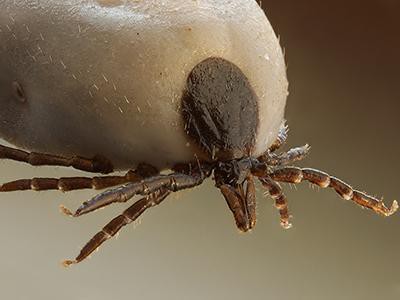
Fleas are a common allergen for dogs and even one single flea bite can initiate the whole itch cycle all over on an allergic dog. Check your dog often with a flea comb to ensure they’re flea and tick-free.
Check for fleas all through your house as fleas don’t just stay on your dog. They can be found in areas where your dog spends a lot of her time such as the dog’s bedding, and feeding area, and check her favorite locations for signs of black specks (flea dirt) or for the fleas themselves.
Do the full flea and tick eradication treatment in your house and treat any infestation in your dogs promptly.
Keep A Clean House

Make a cleaning schedule and Vacuum regularly with an allergy-type furnace filter or HEPA filter. These filters are designed to trap tiny particles of pollen, dander, dust, and so forth.
If you’re considering installing hardwood floors or ripping up your dust-filled carpet, this is a great reason to make headway! Hey, if you’re a smoker, here’s a great reason to quit.
Run the air conditioner in the summer instead of opening windows on days when the pollen count is high.
Clean Your Dog’s Bedding
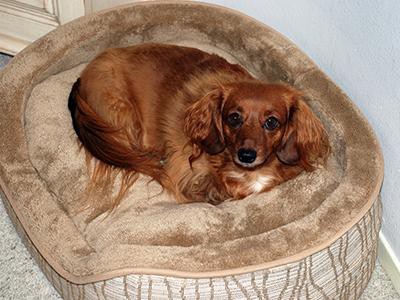
Vacuum your dog’s bedding, use a lint roller to pull out the hair, and wash it in hot water with a non-bio laundry detergent once a week to control dust and kill dust mites.
Try chlorine-free bleach if bleaching is necessary. Sprinkle some baking soda on your dog’s bed and after some time, you can simply use a vacuum cleaner or dust it off to clean all the dry powder.
Ditch those hard chemical cleaners for natural cleaners, like those containing white vinegar, apple cider, or lemon-based products.
Wipe Down Your Dog
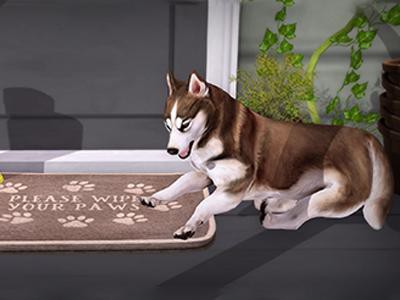
When the pollen count is high or if the lawn has been freshly mowed, it’s better to control the amount of time your dog spends outdoors.
Have a rubber mat and towel by the door so that when your dog comes back inside, wipe down her coat and paws with the towel off excess moisture and mud in a warm dry location to remove any allergens and stop them from being tracked around the house.
You can also use commercial pet wipes to wipe off dirt and you could have your dog wear booties while outside.
Give Regular Grooming
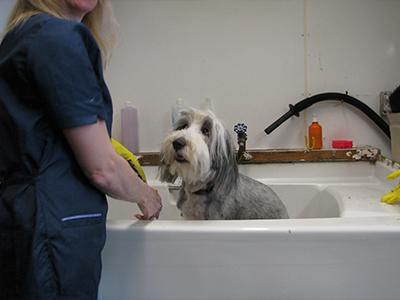
Regular upkeep will help decrease the dirt and allergens on your dog’s fluff, which will keep them cleaner overall. Maintaining a regular grooming routine for your dog is very important.
Definitely, your dog is not going to like this one, but weekly, cool water baths with a dry shampoo or cornstarch can help ease itching and mend your fluffer’s skin.
Natural gels, hydrocortisone creams, and itch sprays can also be very beneficial in soothing skin issues. You may also spray and spot-clean your dog with a mixture of water and vinegar, particularly if your dog is wet, as vinegar will help get rid of the funky wet dog smell.
Try Epsom Salt Soak
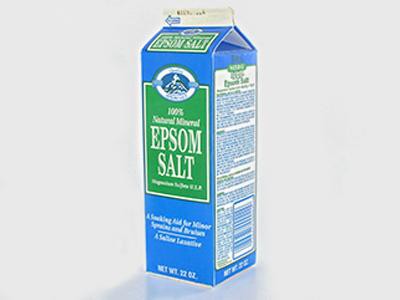
Epsom salt is great for spot treatments or soaking. Epsom salt bath soak oJ r massaging your dog’s skin with Epsom salt could help in healing tender and sore skin as well as muscles.
Your dog will get the most benefit in a safe way if you soak your dog’s paws in Epsom salt dissolved in a bowl of water. Just be sure not to let her drink the water.
Toss The Plastic Bowls
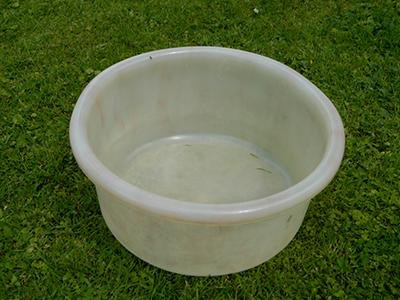
Plastic has tiny scratches and nicks that can be a breeding ground for bacteria. Even if your dog doesn’t have issues such as rashes or facial hot spots, it’s better to ditch the plastic versions for only glass, metal food bowls, stainless steel, or ceramic bowls.
Regardless of the type of bowls you use, make sure to wash them regularly.
Examine Your Dog’s Diet
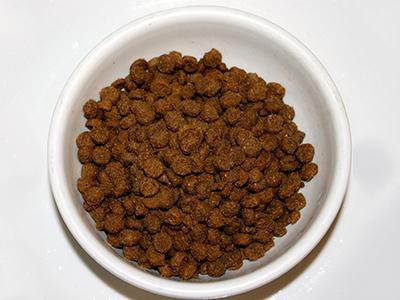
If you think your dog may be allergic to food, establish a base diet for your dog and talk to your vet about starting an exclusion diet to try to find out the source of the allergy.
If you found out which food or protein causes allergy, next you need to know what to include in the hypoallergenic diet to both repair and nourish her in the future.
Also, many holistic nutritionists’ vets believe a diet made from fresh, human-grade food or at least a raw diet is the key to effectively treating allergies, so it’s worth considering that option as well.
Use An Antihistamine
The first way to get relief from allergies for your pet is through antihistamines! Antihistamine has a 30 percent potential to make your dogs less itchy.
Your dogs may get relief from an antihistamine like Benadryl, Zyrtec, Clariton, or a natural antihistamine-like supplement (Quercetin).
While they may work for you at first, antihistamines often lose efficiency in the long run but you could carry that out as long as it lasts. Consult with your vet for a recommendation and the correct dosage.
Supplement With Supplements
Talk to your vet about adding natural anti-inflammatories in the food and adding supplements such as cod liver oil tablets, Omega 3 fatty acids, biotin, or probiotics to your dog’s diet to help boost her immune system.
Home Remedies For Dog Allergies
As avoidance of allergens is not always possible, you can try a few home remedies depending on the type of allergy your dog has.
Several options are available to treat allergies in canines. You can use the following natural remedies to treat such allergies instead of steroids or medications. These remedies will fight against allergens and avoid the harmful side effects of many medications.
But, if your dog has a severe allergic reaction, take it to an emergency veterinary hospital as soon as possible.
Apple Cider Vinegar
You can rinse your dog’s paws with it to remove the pollens. It’s also effective in fighting yeast infections and you can also use it as a cleaner for your dog’s ears. Spray it directly onto itchy areas for relief. But, don’t use it on open wounds or bites.
Coconut Oil
It contains lauric acid, which is effective in decreasing the production of yeast. It also reduces flea allergies and contributes to healthy skin.
Antiviral and antibacterial properties in coconut oil will be effective for itchy skin. It also aids in digestion and boosts the immune system. You can use it in combination with fish oil in your dog’s diet.
Oatmeal Baths
This is an old-age remedy for your pooch’s itchy skin. But, its anti-inflammatory property will wash away the allergens trapped in your dog’s coat. Boil oat straw in the water and mix it in with your dog’s bath.
It also soothes your dog’s skin by reducing redness and swelling. Oatmeal is non-toxic, too! So, don’t panic if your canine licks it. But, it is a carbohydrate-rich product. So, you shouldn’t use it if your dog gets a yeast infection.
Omega-3 fatty acids
Healthy carbohydrates and omega-3 fatty acids will be a balanced diet for your dog have food allergies.
Many dogs are allergic to ingredients found in beef, chicken, or turkey-based dog foods. Wheat can also cause allergies in canines.
So, replacing allergy-causing foods with omega-3 fatty acids and healthy carbohydrates will avoid those allergies in canines.
Fish is rich in omega-3 fatty acids and reduces inflammation. It also improves digestion and promotes skin health. But, always consult the vet while changing your dog’s diet or adding any supplement.
Quercetin
It is a flavanoid, a compound in the plant that provides colorful pigments to fruits and vegetables. Its anti-inflammatory property reduces itching. Quercetin has antioxidant and antihistamine properties as well.
Supplements usually come in capsule and pill form. To provide the right dosage in milligrams, multiply the weight of your dog by 1000 mg and then divide by 125.

